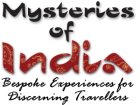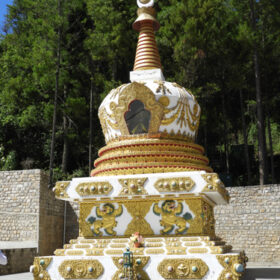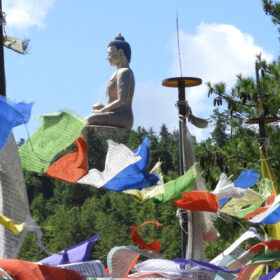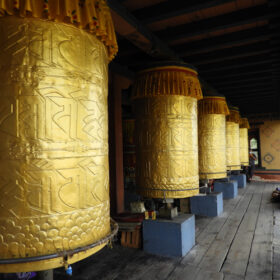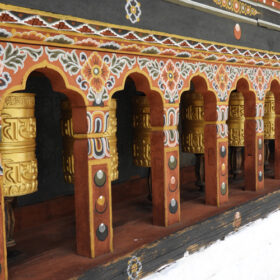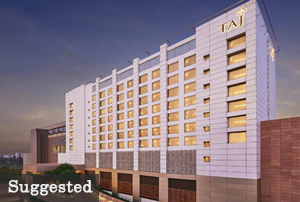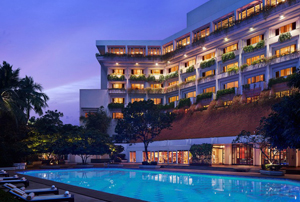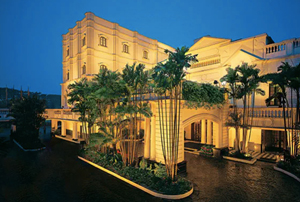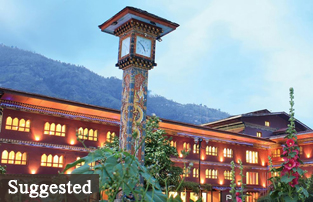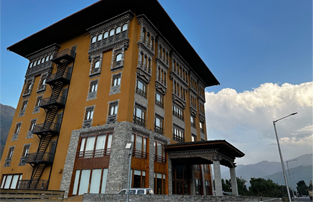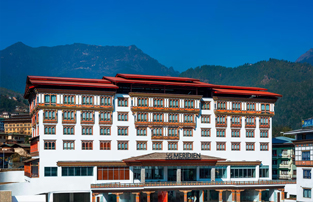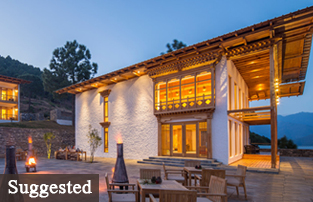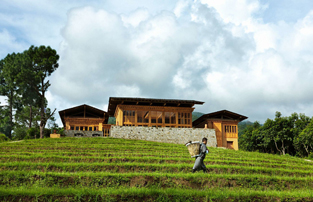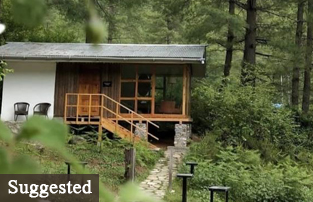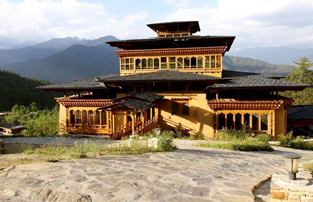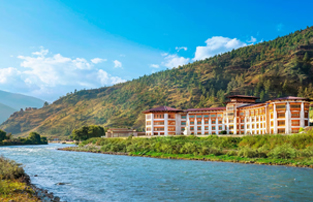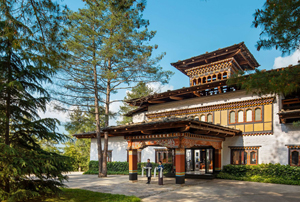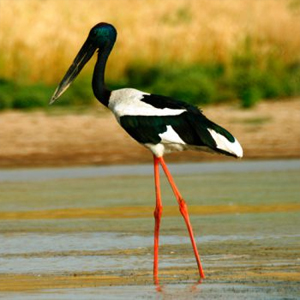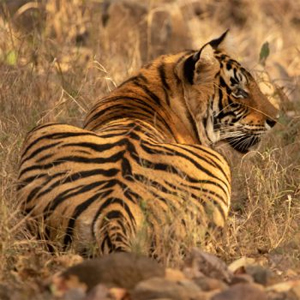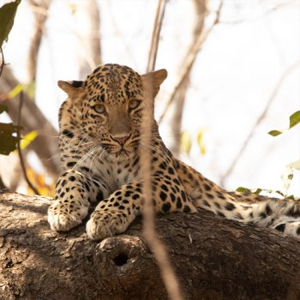Tour: Himalayan Heights and Cultural Delights Tour
Places Visited
Kolkata, Paro, Thimpu, Gangtey and Bhumthang
Thimphu’s Cultural Charm:
Explore the iconic Trashichhoedzong, the seat of Bhutanese government and religion
Witness the grandeur of the Buddha Dordenma statue overlooking Thimphu
Dochu-la Pass Panorama:
Stop at Dochu-la Pass for breathtaking views of Bhutan’s highest peaks
Admire the ornate chorten, mani wall, and colorful prayer flags
Gangtey (Phobjikha Valley):
GangteyGoempa (Monastery): The largest Nyingmapa monastery in Bhutan, offering spiritual significance.
Gangtey Nature Trail: A picturesque walking trail offering stunning views of the valley.
Bumthang
JakarDzong: Experience the grandeur of JakarDzong, an impressive fortress overlooking Choekhor valley.
This historical site offers panoramic views and a glimpse into Bhutan’s architectural and cultural heritage.
Bumthang Brewery:
Discover the art of traditional beer-making at Bumthang Brewery, home to the famous Red Panda Beer. Learn about the brewing process and indulge in tasting sessions, immersing yourself in Bhutan’s contemporary culture.
Punakha’s Historic Beauty:
Visit the historical Punakha Dzong, a symbol of Bhutanese architecture and heritage Taktshang Monastery (Tiger’s Nest):
Embark on a scenic trek to the iconic Taktshang Monastery, clinging to a cliff 900 meters above the Paro Valley
Explore the iconic Trashichhoedzong, the seat of Bhutanese government and religion
Witness the grandeur of the Buddha Dordenma statue overlooking Thimphu
Dochu-la Pass Panorama:
Stop at Dochu-la Pass for breathtaking views of Bhutan’s highest peaks
Admire the ornate chorten, mani wall, and colorful prayer flags
Gangtey (Phobjikha Valley):
GangteyGoempa (Monastery): The largest Nyingmapa monastery in Bhutan, offering spiritual significance.
Gangtey Nature Trail: A picturesque walking trail offering stunning views of the valley.
Bumthang
JakarDzong: Experience the grandeur of JakarDzong, an impressive fortress overlooking Choekhor valley.
This historical site offers panoramic views and a glimpse into Bhutan’s architectural and cultural heritage.
Bumthang Brewery:
Discover the art of traditional beer-making at Bumthang Brewery, home to the famous Red Panda Beer. Learn about the brewing process and indulge in tasting sessions, immersing yourself in Bhutan’s contemporary culture.
Punakha’s Historic Beauty:
Visit the historical Punakha Dzong, a symbol of Bhutanese architecture and heritage Taktshang Monastery (Tiger’s Nest):
Embark on a scenic trek to the iconic Taktshang Monastery, clinging to a cliff 900 meters above the Paro Valley
Price Includes
✔ 12 nights accommodation on twin sharing basis.
✔ Breakfast & dinner at the hotel and lunches at the local restaurants in Bhutan except in Kolkata where it is on breakfast basis.
✔ All transfers and sightseeing as per the itinerary
✔ English speaking accompanying guide
✔ Governmental royalty and taxes
✔ Entrances fee
✔ Bhutan visa fee
✔ Air fare for the sector Kolkata-Paro-Kolkata in economy class.
✔ 02 water bottle per person per day.
✔ Breakfast & dinner at the hotel and lunches at the local restaurants in Bhutan except in Kolkata where it is on breakfast basis.
✔ All transfers and sightseeing as per the itinerary
✔ English speaking accompanying guide
✔ Governmental royalty and taxes
✔ Entrances fee
✔ Bhutan visa fee
✔ Air fare for the sector Kolkata-Paro-Kolkata in economy class.
✔ 02 water bottle per person per day.
Day 1 – Arrive Kolkata
Upon your arrival you will be met by Mysteries of India’s representative who will escort you till your hotel.
Check in to the airport hotel.
Kolkata (formally Calcutta), situated on the eastern bank of Hoogly River, was once the capital of British India, and is now the capital of West Bengal. It is the gateway to eastern India. Conceived in 1686 it has had a turbulent history. Now the largest city in India it displays glaring contrasts: a curious blend of the old and the new, wealth and poverty, partly feudal, partly born out of growing urbanisation, partly un-definable. It is a medley of east and west, of a European city grafted on the Asian landscape that gives Kolkata its bewildering charm, confusion and excitement. Being just about 300 years old, Kolkata has few great historical monuments.
Check in at the hotel.
Rest of the day at leisure.
Overnight in Kolkata
Check in to the airport hotel.
Kolkata (formally Calcutta), situated on the eastern bank of Hoogly River, was once the capital of British India, and is now the capital of West Bengal. It is the gateway to eastern India. Conceived in 1686 it has had a turbulent history. Now the largest city in India it displays glaring contrasts: a curious blend of the old and the new, wealth and poverty, partly feudal, partly born out of growing urbanisation, partly un-definable. It is a medley of east and west, of a European city grafted on the Asian landscape that gives Kolkata its bewildering charm, confusion and excitement. Being just about 300 years old, Kolkata has few great historical monuments.
Check in at the hotel.
Rest of the day at leisure.
Overnight in Kolkata
Accommodation Options
Day 2 – – Paro by flight, Arrive Paro (Bhutan & transfer to Thimphu (55km, approx. 1.1/2-hour drive)
The flight to Paro is one of the most spectacular in entire Himalayas. Flying along the Himalayan range from Kathmandu or over Himalayan foothills if flying over Kolkatta, the journey offers fascinating views and an exciting descent into the Kingdom. Bhutan’s first gift to you as you disembark from the aircraft will be cool, clean fresh mountain air.
After immigration formalities and baggage collection you will be warmly welcomed by our representative and drive to Thimphu, the capital town of Bhutan. The road leads through the Paro valley to the confluence of Paro and Thimphu rivers at Chuzom (confluence).
Shortly before reaching Chuzom, you will see on your left Tamchog Lhakhang, the temple built by ThangtongGyalpo, a pioneering engineer who introduced the construction of suspension bridges into Bhutan and Tibet (several of which are still in use today). The present bridge to Tamchog Lhakhang was restored in 2005 in the design of a traditional style with iron chains and crossing this iron bridge is a wonderful experience. (approx. 50 min, roundtrip walk).
On arrival, in Thimphu check-into the hotel. The capital town of Bhutan and the centre of government, religion and commerce, Thimphu is a unique city with unusual mixture of modern development alongside ancient traditions. With the population of about 1,30,000 it is perhaps still the world’s only capital city without a traffic light.
Later in afternoon visit National Memorial Chorten, a large white structure crowned with a golden spire. It is located close to the center of Thimphu city and is one of its most iconic monuments. This is the most ideal spot to interact with locals who throng in large numbers to circumambulate the chorten, whirl the large red prayer wheels and pray at a small shrine inside the gate. The paintings and statues inside the monument provide a deep insight into Buddhist philosophy.
Afterwards an exploratory walk around Thimphu main street and market area.
Overnight at the hotel in Thimphu (Altitude 2,320m).
After immigration formalities and baggage collection you will be warmly welcomed by our representative and drive to Thimphu, the capital town of Bhutan. The road leads through the Paro valley to the confluence of Paro and Thimphu rivers at Chuzom (confluence).
Shortly before reaching Chuzom, you will see on your left Tamchog Lhakhang, the temple built by ThangtongGyalpo, a pioneering engineer who introduced the construction of suspension bridges into Bhutan and Tibet (several of which are still in use today). The present bridge to Tamchog Lhakhang was restored in 2005 in the design of a traditional style with iron chains and crossing this iron bridge is a wonderful experience. (approx. 50 min, roundtrip walk).
On arrival, in Thimphu check-into the hotel. The capital town of Bhutan and the centre of government, religion and commerce, Thimphu is a unique city with unusual mixture of modern development alongside ancient traditions. With the population of about 1,30,000 it is perhaps still the world’s only capital city without a traffic light.
Later in afternoon visit National Memorial Chorten, a large white structure crowned with a golden spire. It is located close to the center of Thimphu city and is one of its most iconic monuments. This is the most ideal spot to interact with locals who throng in large numbers to circumambulate the chorten, whirl the large red prayer wheels and pray at a small shrine inside the gate. The paintings and statues inside the monument provide a deep insight into Buddhist philosophy.
Afterwards an exploratory walk around Thimphu main street and market area.
Overnight at the hotel in Thimphu (Altitude 2,320m).
Accommodation Options
Day 3 – Thimphu
Morning after breakfast, take a short drive to the north of town to Buddha Dordenma, located atop a hill in Kuenselphodrang Nature Park. The statue fulfils an ancient prophecy dating back to the 8th century A.D that was discovered by Terton Pema Lingpa (Religious Treasure Discoverer) and is said to emanate an aura of peace and happiness to the entire world. This massive statue of Shakyamuni made of bronze and is gilded in gold, measures 51.5 meters in height, making it one of the largest statues, in Bhutan. 125,000 smaller Buddha statues have been placed within the Buddha Dordenma statue, each of these also have been cast in bronze and gilded. Here at Buddha point, you’ve option to perform meditation at a designated area.
Bhutan is known for its innovative postage stamps and The Postal Museum showcases the progress of postal services and also to some extent communication system in Bhutan & country’s rare and unique stamps issued over the years. Also visit the Postal office located next door to get your own personalised postal stamps made and check out various souvenirs.
Then drive to Textile Museum. With the opening of Textile Museum, under the patronage of Her Majesty the Queen AshiSangayChoden, Bhutanese textile have reached new heights as one of the most visible distinct art forms. The textile museum has opened its exhibition on six major themes – warp pattern weaves, weft pattern weaves, role of textiles in religion, achievements in textile arts, textiles from indigenous fibres and the Royal collection.
Post lunch, explore Centenary Farmers Market.Popularly known as Weekend market, this bustling, colourful market centre is the biggest where farmers from different part of the country gather to sell their farm products. With its wide assortment of products including handicrafts and its picturesque and colourful setting, the Farmer’s Market is a favourite spot for many.
Then drive to Zilkha Nunnery. Built in 1976 by the 16th emanation of ThangtongGyalpo, DrubthobRikeyJadrel, this is the only nunnery in the capital city of Thimphu. Located above Zilukha Lower Secondary School, overlooking Traschichhoedzong, the nunnery is home to about 60 nuns who lead life of spiritualism, prayer and meditation.
Nearby Nunnery is PangriZampa. This monastery was built in 1529 by Lam Ngawang Chogyal who came to Bhutan from Ralung in Tibet. It was earlier known as DrukPhodrangding, ‘the Castle of the Dragon’, after the name of an important monastery in Tibet. Here is a monastic school where Buddhist monks learn Lamaism and astrology based on Buddhist philosophy.An interaction with monks and getting astrological predictions through them is a gratifying experience.
Conclude the sightseeing of the day with visit to Trashichhoedzong, ‘fortress of the glorious religion’. This is the center of government and religion, site of monarch’s throne room and seat of Je Khenpo or Chief Abbot. Built in 1641 by the political and religious unifier of Bhutan, ZhabdrungNgawangNamgyal, it was reconstructed in 1960s in traditional Bhutanese manner, without nails or architectural plans.
Overnight at the hotel in Thimphu (Altitude 2,320m).
Bhutan is known for its innovative postage stamps and The Postal Museum showcases the progress of postal services and also to some extent communication system in Bhutan & country’s rare and unique stamps issued over the years. Also visit the Postal office located next door to get your own personalised postal stamps made and check out various souvenirs.
Then drive to Textile Museum. With the opening of Textile Museum, under the patronage of Her Majesty the Queen AshiSangayChoden, Bhutanese textile have reached new heights as one of the most visible distinct art forms. The textile museum has opened its exhibition on six major themes – warp pattern weaves, weft pattern weaves, role of textiles in religion, achievements in textile arts, textiles from indigenous fibres and the Royal collection.
Post lunch, explore Centenary Farmers Market.Popularly known as Weekend market, this bustling, colourful market centre is the biggest where farmers from different part of the country gather to sell their farm products. With its wide assortment of products including handicrafts and its picturesque and colourful setting, the Farmer’s Market is a favourite spot for many.
Then drive to Zilkha Nunnery. Built in 1976 by the 16th emanation of ThangtongGyalpo, DrubthobRikeyJadrel, this is the only nunnery in the capital city of Thimphu. Located above Zilukha Lower Secondary School, overlooking Traschichhoedzong, the nunnery is home to about 60 nuns who lead life of spiritualism, prayer and meditation.
Nearby Nunnery is PangriZampa. This monastery was built in 1529 by Lam Ngawang Chogyal who came to Bhutan from Ralung in Tibet. It was earlier known as DrukPhodrangding, ‘the Castle of the Dragon’, after the name of an important monastery in Tibet. Here is a monastic school where Buddhist monks learn Lamaism and astrology based on Buddhist philosophy.An interaction with monks and getting astrological predictions through them is a gratifying experience.
Conclude the sightseeing of the day with visit to Trashichhoedzong, ‘fortress of the glorious religion’. This is the center of government and religion, site of monarch’s throne room and seat of Je Khenpo or Chief Abbot. Built in 1641 by the political and religious unifier of Bhutan, ZhabdrungNgawangNamgyal, it was reconstructed in 1960s in traditional Bhutanese manner, without nails or architectural plans.
Overnight at the hotel in Thimphu (Altitude 2,320m).
Accommodation Options
Day 4 – Thimphu – Gangtey (150km, approx. 5-hour drive)
After breakfast drive up to Dochu-lapass (3,088m/ 10,130 ft) stopping briefly here to take in the view and admire the chorten, mani wall, and prayer flags which decorate the highest point on the road. If skies are clear, the following peaks can be seen from this pass (left to right): Masagang (7,158m), Tsendagang (6,960m), Terigang (7,060m), Jejegangphugang (7,158 m), Kangphugang (7,170 m), Zongphugang (7, 060 m), a Table Mountain that dominates the isolated region of Lunana – finally Gangkarpuensum, the highest peak in Bhutan at 7,570m.
At Dochula Pass, 108 chortens or stupas known as DrukWangyalChortens have been built by AshiDorjiWangmoWangchuk, the eldest Queen Mother. These chortens are built in three layers, the first lowest level layer has forty-five chortens, the second has thirty-six and the top layer has twenty-seven, built around the main chorten.
Then drive onto Gangtey, passing through dense forests of oak and rhododendron tress.
The valley of Gangtey is one of the most beautiful and unspoiled places in Bhutan. The surprise of finding such a wide, flat valley without any trees after the hard climb through dense forests is augmented by an impression of vast space and is an extremely rare experience in Bhutan where most of the valleys are tightly enclosed. A few kilometers beyond the Gangtey Monastery, on the valley floor lies the village of Phobjikha.
Overnight at the hotel in Gangtey (Altitude 3,000m).
At Dochula Pass, 108 chortens or stupas known as DrukWangyalChortens have been built by AshiDorjiWangmoWangchuk, the eldest Queen Mother. These chortens are built in three layers, the first lowest level layer has forty-five chortens, the second has thirty-six and the top layer has twenty-seven, built around the main chorten.
Then drive onto Gangtey, passing through dense forests of oak and rhododendron tress.
The valley of Gangtey is one of the most beautiful and unspoiled places in Bhutan. The surprise of finding such a wide, flat valley without any trees after the hard climb through dense forests is augmented by an impression of vast space and is an extremely rare experience in Bhutan where most of the valleys are tightly enclosed. A few kilometers beyond the Gangtey Monastery, on the valley floor lies the village of Phobjikha.
Overnight at the hotel in Gangtey (Altitude 3,000m).
Accommodation Options
Day 5 – Gangtey
Early morning visit Monastic Schoolto witness prayer ceremony.
Later after breakfast visit GangteyGoempa (monastery). Perched on a small hill that rises from the valley floor, the Gangtey Monastery is the only Nyingmapa monastery on the western side of the Black Mountain’s and also the biggest Nyingmapa monastery in Bhutan. The Monastery is surrounded by a large village inhabited mainly by the families of the 140 Gomchens who take care of the Monastery. Gangtey was founded by Pema Trinley, the grandson of Pema Lingpa, the famous Nyingmapa saint of Bhutan. In 1613, Pema Trinley establish the monastery and became the first Gangtey Tulku. The religious traditions of Pema Lingpa still taught there.
Then embark on a walking excursion to Gangtey Nature Trail. This pleasurable walk will give you a nice feel of Phobjikha valley. From the small hilltop overlooking GangteyGoemba, you head downhill through flower meadows to Semchubara village and from here through beautiful forests and into the open valley. The trail ends at local community school after passing a chorten and Khewa Lhakhang. (approx. 5.5km, 2 hours walk).
Post lunch explore fascinating Phobjikha valley. This place is the winter home of black necked cranes that migrate from the arid plains in the north to pass winter in milder and lower climate. The valley boasts two beautiful meandering rivers, NakayChhu (ChhuNaap-black water) and Gay Chhu (Chhu Karp-white water).
Also visit Black Neck Crane Information Centre. Situated on the edge of the forest and wetland along the main road of Phobjikha valley, the black-necked crane information Centre has an observation room equipped with high power telescope and spotting scopes for catching the best view of the cranes. The centre also offers display information that outline the natural and cultural history of the area. There is a small gift shop, which sells handicrafts produced by the local people.
Overnight at the hotel in Gangtey (Altitude 3000m).
Later after breakfast visit GangteyGoempa (monastery). Perched on a small hill that rises from the valley floor, the Gangtey Monastery is the only Nyingmapa monastery on the western side of the Black Mountain’s and also the biggest Nyingmapa monastery in Bhutan. The Monastery is surrounded by a large village inhabited mainly by the families of the 140 Gomchens who take care of the Monastery. Gangtey was founded by Pema Trinley, the grandson of Pema Lingpa, the famous Nyingmapa saint of Bhutan. In 1613, Pema Trinley establish the monastery and became the first Gangtey Tulku. The religious traditions of Pema Lingpa still taught there.
Then embark on a walking excursion to Gangtey Nature Trail. This pleasurable walk will give you a nice feel of Phobjikha valley. From the small hilltop overlooking GangteyGoemba, you head downhill through flower meadows to Semchubara village and from here through beautiful forests and into the open valley. The trail ends at local community school after passing a chorten and Khewa Lhakhang. (approx. 5.5km, 2 hours walk).
Post lunch explore fascinating Phobjikha valley. This place is the winter home of black necked cranes that migrate from the arid plains in the north to pass winter in milder and lower climate. The valley boasts two beautiful meandering rivers, NakayChhu (ChhuNaap-black water) and Gay Chhu (Chhu Karp-white water).
Also visit Black Neck Crane Information Centre. Situated on the edge of the forest and wetland along the main road of Phobjikha valley, the black-necked crane information Centre has an observation room equipped with high power telescope and spotting scopes for catching the best view of the cranes. The centre also offers display information that outline the natural and cultural history of the area. There is a small gift shop, which sells handicrafts produced by the local people.
Overnight at the hotel in Gangtey (Altitude 3000m).
Accommodation Options
Day 6 – Gangtey – Trongsa – Bumthang (153km, approx. 6-hour drive)
After breakfast, drive to Bumthang via Trongsa.
The drive to Trongsa crosses Pelela pass (3,300 m), the traditional boundary between east and west. The pass is marked by cluster of prayer flagswhile the ground is covered with high altitude dwarf bamboo. Stop en route at Chendbji Chorten, the stupa built in 18th century by a Lama named Shida. It is Nepalese in style with eyes painted at four cardinal points.
Trongsa town, perched on steep slopes above a river gorge, forms the central hub of the nation and is the place from where attempts at unifying the country were launched. The landscape around Trongsa is spectacular.
While in Trongsa, visit:
Trongsa Dzong: This most impressive Dzong in Bhutan, was built by ChogyalMinjurTempa, the official who was sent by Zhabdrung to unify Eastern Bhutan and later enlarged at the end of the 17th century by Desi Tenzin Rabgay. Trongsa Dzong is the ancestral home of the present Royal Family. The first two hereditary kings ruled Bhutan from this Dzong.
Then continue on to Bumthang across Yutong-la pass (3,400m/ 11,155ft). The road winds steeply up to the pass from Trongsa, then runs down through coniferous forest into a wide, open cultivated valley known as the Chumey valley.
Take a short stop at Chumey, a wide fertile valley where wheat, barley, potatoes and buckwheat are cultivated. Chumey is particularly known for its famous wool weaving called ‘BumthangYathra’.
Overnight at the hotel in Bumthang. (Altitude 2,600m)
The drive to Trongsa crosses Pelela pass (3,300 m), the traditional boundary between east and west. The pass is marked by cluster of prayer flagswhile the ground is covered with high altitude dwarf bamboo. Stop en route at Chendbji Chorten, the stupa built in 18th century by a Lama named Shida. It is Nepalese in style with eyes painted at four cardinal points.
Trongsa town, perched on steep slopes above a river gorge, forms the central hub of the nation and is the place from where attempts at unifying the country were launched. The landscape around Trongsa is spectacular.
While in Trongsa, visit:
Trongsa Dzong: This most impressive Dzong in Bhutan, was built by ChogyalMinjurTempa, the official who was sent by Zhabdrung to unify Eastern Bhutan and later enlarged at the end of the 17th century by Desi Tenzin Rabgay. Trongsa Dzong is the ancestral home of the present Royal Family. The first two hereditary kings ruled Bhutan from this Dzong.
Then continue on to Bumthang across Yutong-la pass (3,400m/ 11,155ft). The road winds steeply up to the pass from Trongsa, then runs down through coniferous forest into a wide, open cultivated valley known as the Chumey valley.
Take a short stop at Chumey, a wide fertile valley where wheat, barley, potatoes and buckwheat are cultivated. Chumey is particularly known for its famous wool weaving called ‘BumthangYathra’.
Overnight at the hotel in Bumthang. (Altitude 2,600m)
Accommodation Options
Day 7 – Bumthang
Bumthang comprising of four valleys namely, Tang, Ura, Chumey&Choekhor, is one of the most richly endowed districts in Bhutan, in terms of historical and cultural legacy. Choekhor valley is the largest amongst all and widely considered as ‘Bumthang valley’. The valleys are broad and gentle carved by the ancient glaciers, housing most venerated temples and monasteries in the country. The fertile valleys of Bumthang are covered with fields of buckwheat, rice and potatoes, apple orchards and dairy farms.
The day starts with visit of Jambey Lhakhang, the ancient temple built by Tibetan King SongtsenGampo in 659 A.D. as part of a chain of 108 simultaneously constructed temples in order to subdue an evil demoness that lay over the Himalayan region.
Short distance from Jambey Lhakhang is the site of sacred Kurje Lhakhang comprising of three temples which are surrounded by 108 chorten walls. The first and the oldest structure of the three, was constructed on the rock where Guru Rinpoche meditated. The second building is also called the Sampalhundrup temple and houses a colossal statue of Guru Rinpoche.The third building is known as KaGonPhur sum lhakhang dedicated to the happiness of all living beings in the kingdom.
Then visit picturesquely located JakarDzong, overlooking Choekhor valley.According to legend, when the lamas assembled in about 1549 to select a site for a monastery, a big white bird rose suddenly in the air and settled on a spur of a hill. This was interpreted as an important omen, and the hill was chosen as the monastery’s site and for JakarDzong, which translates as ‘castle of the white bird’.
Post lunch, visit Tamshing Lhakhang, the temple founded in 1501 by Terton Pema Lingpa, the re-incarnation of Guru Padsambhava. The monastery has very ancient religious paintings like 1,000 Buddhas and 21 Taras (female form of Buddhistava). The temple was restored at the end of the 19th century.
Then go for an interesting visit to Bumthang Brewery. This state-of the-art microbrewery produces Swiss-style unfiltered Weiss beer locally famous as ‘Red Panda Beer’. When launched, this was first of its kind Brewery in Bhutan, producing draught beer, apple cider, wine, apple brandy. At the Brewery, one can see the entire process of making unfiltered Weiss beer while at adjacent Swiss Farm get an insight into the cheese-making process, also taste Red Panda Beer and procure cheese, apple brandy, clover honey etc.
Evening stroll in the village, exploring local shops and market.
Overnight at hotel in Bumthang (Altitude 2600m).
The day starts with visit of Jambey Lhakhang, the ancient temple built by Tibetan King SongtsenGampo in 659 A.D. as part of a chain of 108 simultaneously constructed temples in order to subdue an evil demoness that lay over the Himalayan region.
Short distance from Jambey Lhakhang is the site of sacred Kurje Lhakhang comprising of three temples which are surrounded by 108 chorten walls. The first and the oldest structure of the three, was constructed on the rock where Guru Rinpoche meditated. The second building is also called the Sampalhundrup temple and houses a colossal statue of Guru Rinpoche.The third building is known as KaGonPhur sum lhakhang dedicated to the happiness of all living beings in the kingdom.
Then visit picturesquely located JakarDzong, overlooking Choekhor valley.According to legend, when the lamas assembled in about 1549 to select a site for a monastery, a big white bird rose suddenly in the air and settled on a spur of a hill. This was interpreted as an important omen, and the hill was chosen as the monastery’s site and for JakarDzong, which translates as ‘castle of the white bird’.
Post lunch, visit Tamshing Lhakhang, the temple founded in 1501 by Terton Pema Lingpa, the re-incarnation of Guru Padsambhava. The monastery has very ancient religious paintings like 1,000 Buddhas and 21 Taras (female form of Buddhistava). The temple was restored at the end of the 19th century.
Then go for an interesting visit to Bumthang Brewery. This state-of the-art microbrewery produces Swiss-style unfiltered Weiss beer locally famous as ‘Red Panda Beer’. When launched, this was first of its kind Brewery in Bhutan, producing draught beer, apple cider, wine, apple brandy. At the Brewery, one can see the entire process of making unfiltered Weiss beer while at adjacent Swiss Farm get an insight into the cheese-making process, also taste Red Panda Beer and procure cheese, apple brandy, clover honey etc.
Evening stroll in the village, exploring local shops and market.
Overnight at hotel in Bumthang (Altitude 2600m).
Accommodation Options
Day 8 – Bumthang – Punakha (215km, approx. 6.1/2- hour drive)
After breakfast, drive back to Punakha.
En route at Trongsa, visit Ta Dzong, a cylindrical stone structure rising five stories, was built in 1652 by ChogyalMinjurTempa. After more than 350 years, it has been resurrected into a classy museum, that represents a tasteful blend of tradition and modernity.
Before entering Punakha town, on the way visit WangduephodrangDzong. Founded by ZhabdrungNgawangNamgyal in 1638, on the top of high ridge between Punak Tsang Chhu and Dang Chhu rivers, offering fantastic of the valley below, Wangdue Dzong holds special place in Bhutan’s history. The strategic location of the dzong, provided Penlop (Governor) of Wangduephodrang, chance to protect the routes to Trongsa, Punakha, Dagana and Thimphu making him the third most powerful ruler after Governors of Paro and Trongsa. The Dzong had been damaged by fire in 2012 and restored to its original grandeur and splendour recently (in 2022).
Evening at leisure in Punakha / Wangduephodrang towns.
Overnight at Hotel in Punakha (Altitude 1,300m).
En route at Trongsa, visit Ta Dzong, a cylindrical stone structure rising five stories, was built in 1652 by ChogyalMinjurTempa. After more than 350 years, it has been resurrected into a classy museum, that represents a tasteful blend of tradition and modernity.
Before entering Punakha town, on the way visit WangduephodrangDzong. Founded by ZhabdrungNgawangNamgyal in 1638, on the top of high ridge between Punak Tsang Chhu and Dang Chhu rivers, offering fantastic of the valley below, Wangdue Dzong holds special place in Bhutan’s history. The strategic location of the dzong, provided Penlop (Governor) of Wangduephodrang, chance to protect the routes to Trongsa, Punakha, Dagana and Thimphu making him the third most powerful ruler after Governors of Paro and Trongsa. The Dzong had been damaged by fire in 2012 and restored to its original grandeur and splendour recently (in 2022).
Evening at leisure in Punakha / Wangduephodrang towns.
Overnight at Hotel in Punakha (Altitude 1,300m).
Accommodation Options
Day 9 – Punakha
Punakha served as the capital of Bhutan and seat of government until 1955 and still it is the winter seat of Je Khenpo (the chief abbot). Blessed with temperate climate and owing to its natural drainage from Pho Chhu (male) and Mo Chhu (female) rivers, the fertile Punakha valley produces abundant crops and fruits. Located at an elevation of 1300m above sea level, Punakha enjoys mild winters and is popular year-round destination.
After breakfast, visit Punakha Dzong or ‘Palace of Great Happiness’, built at the junction of the Phochu and Mochu rivers in 1637 by ShabdrungNgawangNamgyal. This majestic dzong served as both the religious and the administrative centre of Bhutan in the past. It measures some 600 by 240 feet and has a six-story, gold-domed tower. Inside are courtyards and religious statuary that hint at the depth of history and spiritual tradition embodied here. Your guide will illuminate your understanding of this intricate culture that is exotic to us, though long established here.
Then a short excursion to Chimi Lhakhang.
The Chimi Lhakhang, situated on a hillock in the centre of the valley, also known as the temple of fertility. It is widely believed that couples who do not have children and wanting one, if they pray at this temple, they are usually blessed with a child very soon. The trail leads across rice fields to the tiny settlement of Pana, meaning ‘field’. A walk through the village near the temple will give you rare glimpses into the daily life and lifestyle of the villagers.
Post lunch, a beautiful hike takes one to the regal KhamsumYuelleyNamgelChorten (approx. 2-hour round trip walk), which was built to remove negative forces and promote peace, stability and harmony in the changing world. The Chorten dominates the upper Punakha Valley with commanding views across the Mo Chhu and up towards the mountainous peaks of Gasa and beyond.
Overnight at the hotel in Punakha (Altitude 1,300m).
After breakfast, visit Punakha Dzong or ‘Palace of Great Happiness’, built at the junction of the Phochu and Mochu rivers in 1637 by ShabdrungNgawangNamgyal. This majestic dzong served as both the religious and the administrative centre of Bhutan in the past. It measures some 600 by 240 feet and has a six-story, gold-domed tower. Inside are courtyards and religious statuary that hint at the depth of history and spiritual tradition embodied here. Your guide will illuminate your understanding of this intricate culture that is exotic to us, though long established here.
Then a short excursion to Chimi Lhakhang.
The Chimi Lhakhang, situated on a hillock in the centre of the valley, also known as the temple of fertility. It is widely believed that couples who do not have children and wanting one, if they pray at this temple, they are usually blessed with a child very soon. The trail leads across rice fields to the tiny settlement of Pana, meaning ‘field’. A walk through the village near the temple will give you rare glimpses into the daily life and lifestyle of the villagers.
Post lunch, a beautiful hike takes one to the regal KhamsumYuelleyNamgelChorten (approx. 2-hour round trip walk), which was built to remove negative forces and promote peace, stability and harmony in the changing world. The Chorten dominates the upper Punakha Valley with commanding views across the Mo Chhu and up towards the mountainous peaks of Gasa and beyond.
Overnight at the hotel in Punakha (Altitude 1,300m).
Accommodation Options
Day 10 – Punakha – Paro (125 km, approx. 4-hour drive)
After breakfast, drive to Paro along scenic highway. En route visit handsomely proportioned SimtokhaDzong built in 1629 by ZhabdrungNgawangNamgyal and modelled on GyalGyadTshel Institute of Ralung (Tibet). Officially known as SangakZabdhonPhodrang (Palace of the Profound Meaning of Secret Mantras), Simtokha is often said to be the first dzong built in Bhutan. It is in fact also the oldest dzong to have survived as a complete structure.
On arrival in Paro, check into the hotel.
The beautiful valley of Paro encapsulates within itself a rich culture, scenic beauty and hundreds of myths and legends. It is home to many of Bhutan’s oldest temples and monasteries, National Museum and country’s only international airport. Mount. Chomolhari (7,314m) reigns in white glory at the northern end of the valley and its glacial water plunge through deep gorges to form Pa Chhu (Paro River). Paro is also one of the most fertile valleys in the Kingdom producing a bulk of the locally famous red rice from its terraced fields.
Post lunch, proceed to visit Ta Dzong, originally built as Watchtower, which now houses National Museum. The extensive collection includes antique thangkha paintings, textiles, weapons & armour, household objects and a rich assortment of natural and historic artifacts.
Ta Dzong visit immediately followed by a short walk down the trail to visit RinpungDzong(Paro Dzong), meaning (“fortress of the heap of jewels”), which has a long and fascinating history. Along the wooden galleries lining the inner courtyard are fine wall paintings illustrating Buddhist lore such as four friends, the old man of long life, the wheel of life, scenes from the life of Milarepa, Mount. Sumeru and cosmic Mandala.
Overnight at the hotel in Paro. (Altitude 2,280m)
On arrival in Paro, check into the hotel.
The beautiful valley of Paro encapsulates within itself a rich culture, scenic beauty and hundreds of myths and legends. It is home to many of Bhutan’s oldest temples and monasteries, National Museum and country’s only international airport. Mount. Chomolhari (7,314m) reigns in white glory at the northern end of the valley and its glacial water plunge through deep gorges to form Pa Chhu (Paro River). Paro is also one of the most fertile valleys in the Kingdom producing a bulk of the locally famous red rice from its terraced fields.
Post lunch, proceed to visit Ta Dzong, originally built as Watchtower, which now houses National Museum. The extensive collection includes antique thangkha paintings, textiles, weapons & armour, household objects and a rich assortment of natural and historic artifacts.
Ta Dzong visit immediately followed by a short walk down the trail to visit RinpungDzong(Paro Dzong), meaning (“fortress of the heap of jewels”), which has a long and fascinating history. Along the wooden galleries lining the inner courtyard are fine wall paintings illustrating Buddhist lore such as four friends, the old man of long life, the wheel of life, scenes from the life of Milarepa, Mount. Sumeru and cosmic Mandala.
Overnight at the hotel in Paro. (Altitude 2,280m)
Accommodation Options
Day 11 – Paro
After breakfast, embark on a fascinating excursion to Taktshang Monastery or Tiger’s Nest (approx. 5 hours round trip walk). It is one of the most famous of Bhutan’s monasteries, perched on the side of a cliff 900m above the Paro valley floor. Legends say that Guru Rinpoche arrived here on the back of a tigress and meditated at this monastery and hence it is called ‘Tiger’s Nest’. This site has been recognized as a most sacred place and visited by ZhabdrungNgawangNamgyal in 1646 and now visited by all Bhutanese at least once in their lifetime.
Late afternoon, drive end of the Valley to newly restored DrukgyelDzong. Built by ZhabdrungNgawangNamgyal in 1646 to commemorate an early military victory over Tibetan invaders, the dzong name means, indeed, ‘victorious Druk’. Historically and strategically, this Dzong withstood all its glory and was featured in 1914 vide National Geographic magazine. The glory of DrukgyelDzong remained even when it was destroyed by fire in 1951. On a clear day, one can see the commanding view of Mount. Chomolhari (7,314m) from the village, below the Dzong.
Neary by we will also visita typical farmhouse. Bhutanese farmhouses are very colorful, decorative and traditionally built without the use of single nail. The majority of the population of Bhutan continues to live as it has for centuries – in small, isolated farms and hamlets, surrounded by terraced fields of rice, maize and buckwheat.
While driving to Paro town, stop en route at the 7th century Kyichu Lhakhang, one of the 108 temples built in the Himalayas by Tibetan King, SongtsenGampo. The building of this temple marks the introduction of Buddhism in Bhutan.
Overnight at the hotel in Paro(Altitude 2,280m).
Late afternoon, drive end of the Valley to newly restored DrukgyelDzong. Built by ZhabdrungNgawangNamgyal in 1646 to commemorate an early military victory over Tibetan invaders, the dzong name means, indeed, ‘victorious Druk’. Historically and strategically, this Dzong withstood all its glory and was featured in 1914 vide National Geographic magazine. The glory of DrukgyelDzong remained even when it was destroyed by fire in 1951. On a clear day, one can see the commanding view of Mount. Chomolhari (7,314m) from the village, below the Dzong.
Neary by we will also visita typical farmhouse. Bhutanese farmhouses are very colorful, decorative and traditionally built without the use of single nail. The majority of the population of Bhutan continues to live as it has for centuries – in small, isolated farms and hamlets, surrounded by terraced fields of rice, maize and buckwheat.
While driving to Paro town, stop en route at the 7th century Kyichu Lhakhang, one of the 108 temples built in the Himalayas by Tibetan King, SongtsenGampo. The building of this temple marks the introduction of Buddhism in Bhutan.
Overnight at the hotel in Paro(Altitude 2,280m).
Accommodation Options
Day 12 – Paro-Kolkata by flight
Day 13 – Depart Kolkata
Post breakfast transfer to airport to board flight for onward destination.
